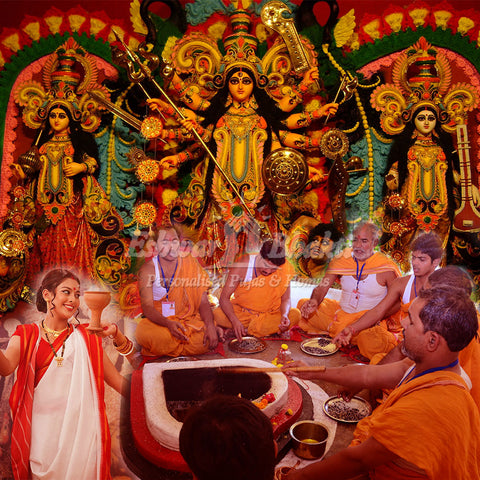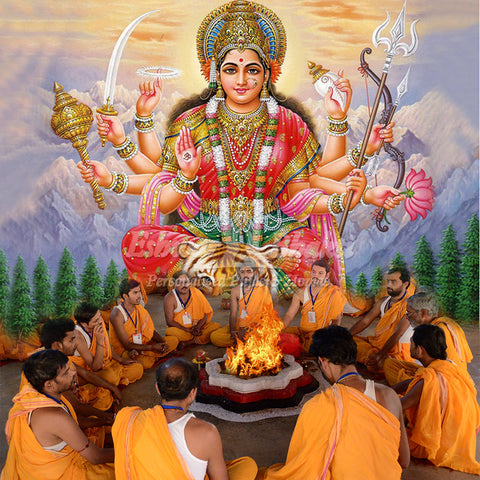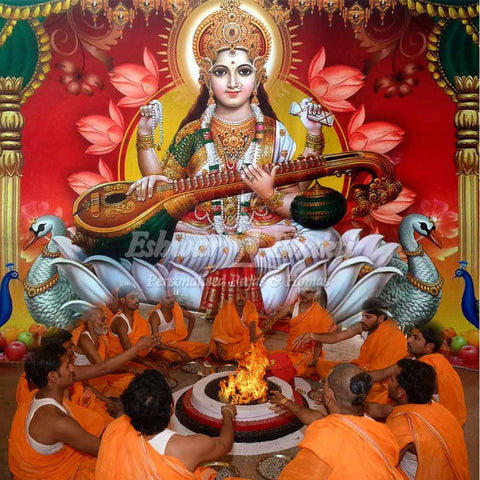Why Indian Women wear Bindi?
 Bindi is a word that comes from the Sanskrit word, Bindu, which means a point or dot. As per the ancient scriptures, Bindhu is the place where the creation of the cosmos started. We can see the concept of Bindu in the Nasadiya Sukta of the Rig Veda. It is in the hymns of creation. Women in India commonly adorn their foreheads with a Bindi. In Hinduism, in the ancient days, married women used them as a sign of representing their status. However, in the current decade, Bindi has transformed into a fashion statement worn as a decoration by women.
Bindi is a word that comes from the Sanskrit word, Bindu, which means a point or dot. As per the ancient scriptures, Bindhu is the place where the creation of the cosmos started. We can see the concept of Bindu in the Nasadiya Sukta of the Rig Veda. It is in the hymns of creation. Women in India commonly adorn their foreheads with a Bindi. In Hinduism, in the ancient days, married women used them as a sign of representing their status. However, in the current decade, Bindi has transformed into a fashion statement worn as a decoration by women.
In the traditional Aryan Society, during a marriage ceremony, the husband makes a tilaka or a red dot on his wife's forehead. Bindi could be an extension of the custom practiced by the ancient Aryans. Another connection with the past is in the Indus Valley civilization. Archaeologists have found feminine figures with red marks on their foreheads. These marks could probably be a red Bindi.
Different cultures and religions apart from Hinduism also consider wearing a Bindi as auspicious. Bindi is an ethnic statement in other South Asian countries like Bangladesh, Mauritius, Nepal, and Sri Lanka. In Hinduism, there are various concepts associated with it. Both men and women wore Bindi in the ancient period. Traditionally, it is a red dot mostly made from Kumkum between the eyebrows. Nowadays, women wear different colors of Bindis. In the early days, only married women wore red Bindi as a sign of representing their marriage. However, women generally wear them without any difference.
It was in 3000 BC the saints wrote the Vedas. In the Vedas, there is a detailed description of the seven Chakras in our bodies. These Chakras are associated with the flow of energy in our bodies. They provide us with the life force. There are points linked to different Chakras. Agna is the sixth Chakra, and it is present in our forehead between our eyebrows. It is a site of intuition and intellect. By wearing a Tilak or a Bindi at the central point of our forehead can aid us in balancing the Chakra and improve our concentration. However, most women now wear artificial Bindis. They can't provide any specific benefits to the healing of our Agna Chakra. Some people even face skin irritation after using an artificial Bindi. It is always better to use natural Bindis made from Kumkum, Sandalwood, or others.
Significance of Indian Women Wearing Bindi: There are a plethora of significances associated with women wearing Bindi in India. It is a way of depicting their faith in a religion as well as it can have several benefits to our mind and body. Here, we will look into some of the most relevant significances of Indian women wearing Bindi.
1. The colors of Bindi play a vital role as symbols in Hinduism. Though there are several colors of Bindi available nowadays, we are focusing on those that occur naturally. Red Bindi, usually worn by married women, is a sign of offering sacrifice to gain the blessings of the Gods and Goddesses. Red Bindis are made from Kumkum. When we wear such a Bindi, we apply it out of respect for our inner guru. Bindi made from Chandan or Sandalwood can aid in cooling our minds. It also improves our ability to concentrate. When we wear a Bindhi from Basma, it helps to understand that in the end, our lives get turned into mere ashes. Unmarried women and young girls usually wear Black Bindis, mostly made from lampblack or kajal.
2. Women wear Bindis during marriage ceremonies or festivals. It is a way of showing their success in life, prosperity, and love.
3. A woman adorns it during her marriage as a sign of depicting her spirit of womanhood. Hindu women believe that it can bring good fortune as well. It is also a way to provide the woman with a place in her in-laws.
4. The area between our eyebrows is the location of the Ajna Chakra or the sixth Chakra. It helps in enhancing the energy flow through our bodies and also strengthens it. Once we have a calm Ajna or sixth Chakra, it is easier to embrace the concealed wisdom. It can also aid us in arriving at the latent energy. You can retain the vitalities and remove their imbalances by wearing a Bindi. It would help in meditating and bringing our focus back.
5. The point between our eyebrows represents the third eye. If we are able to move beyond the material realms, we can ascend to transcendence. It happens with the opening of our inner eye, which would help us to foresee our inner God. By wearing a bindi made from Kumkum, Chandan, or any other natural source, you can connect with the divinity.
6. The root word associated with Bindi is Bindu, which refers to the point where the creation of the world started. When we wear a Bindi, it is a method of embracing the different creations of the universe.
7. Bindi helps to improve concentration, focus, and also aids in calming the mind. It is essential to wear natural Bindi to attain these benefits. When we use an artificial one, it cannot assist us.
Bindi, in the present, has turned into a mere fashion statement worn by women, sometimes by men as well. However, we can muster its benefits only by wearing a naturally-made Bindi. Its close association with our sixth Chakra or the third eye also makes the usage of a Bindi significant. It is not merely a cultural statement. It can aid us in improving the connection between our mind and body as well.





Comments
This is very interesting. I am not Indian but I have a natural Bindhi. A mole centered on my forehead. I always wondered why people wore them,